Houseplants are not only aesthetically pleasing but also have the potential to improve the quality of indoor air. According to a study by the University of Birmingham, ordinary potted houseplants can significantly reduce air pollution in homes and offices. The research found that houseplants can remove pollutants such as benzene, formaldehyde, and nitrogen dioxide from the air.
While houseplants may not be a complete solution for improving indoor air quality, they can certainly help. A study published in the Journal of Toxicology and Environmental Health found that certain indoor plants can remove up to 87% of air toxins in 24 hours. Some of the most effective plants for purifying air are spider plants, peace lilies, and snake plants. In addition to removing pollutants, houseplants release oxygen and moisture into the air, improving overall air quality and help reduce symptoms of dry skin and respiratory issues.
Incorporating houseplants into indoor spaces can be a simple and effective way to improve air quality and promote a healthier living environment. While it’s important to note that houseplants alone cannot wholly purify indoor air, they can complement other measures, such as proper ventilation and air filtration systems. Houseplants can be a natural and aesthetically pleasing addition to any indoor space with the appropriate selection of plants and care.

Understanding Air Quality
Air quality refers to the degree to which the air we breathe is free from harmful pollutants or contaminants. Poor air quality can cause various health problems, including respiratory illnesses, allergies, and cancer.
Air pollution can come from various sources, including vehicle emissions, industrial processes, and natural phenomena like wildfires. However, indoor air quality can also be a significant concern.
Indoor air pollution can be caused by various factors, including inadequate ventilation, the use of certain chemicals or cleaning products, and the presence of volatile organic compounds (VOCs). VOCs are chemicals in many household items, including paints, adhesives, and furniture.
VOCs can have various adverse health effects, including headaches, dizziness, and respiratory problems. They can also contribute to the formation of ground-level ozone, which can cause additional respiratory issues.
One way to improve indoor air quality is by introducing houseplants. Studies have shown that certain houseplants, including VOCs, can help remove pollutants from the air. However, it’s important to note that while houseplants can be helpful, they should not be relied upon as the sole solution for improving indoor air quality. Other measures should also be considered, such as proper ventilation and limiting certain chemicals.

The Role of Houseplants in Air Quality
Houseplants have been known to contribute to air quality by removing harmful pollutants from the air. Studies have shown that indoor plants can help to purify the air by removing volatile organic compounds (VOCs) such as benzene, formaldehyde, and trichloroethylene. These pollutants are commonly found in indoor environments and can cause various health issues, such as headaches, dizziness, and respiratory problems.
According to a study by the University of Birmingham, ordinary potted houseplants can significantly reduce air pollution in homes and offices. The study found that common houseplants such as spider plants, peace lilies, and Boston ferns can remove pollutants from the air, improving indoor air quality.
Houseplants can help to purify the air by absorbing pollutants through their leaves and roots. They can also release oxygen and moisture into the air, which can help to create a more comfortable and healthy indoor environment.
Air-purifying plants such as snake plants, rubber plants, and English ivy are particularly effective at removing pollutants from the air. These plants can help reduce harmful chemicals in the air, creating a cleaner and healthier environment.
In conclusion, houseplants can be crucial in improving indoor air quality. Removing harmful pollutants from the air can help create a healthier and more comfortable living environment. Incorporating houseplants into your home or office can be a simple and effective way to improve air quality and promote better health.
Specific Houseplants and Their Contributions
Zamioculcas Zamiifolia
Zamioculcas Zamiifolia, also known as the ZZ plant, is a popular houseplant that is easy to care for and has air-purifying properties. It effectively removes toxins such as benzene, toluene, and xylene from the air. The ZZ plant is also known for its ability to tolerate low light conditions and drought, making it an ideal choice for those new to indoor gardening.
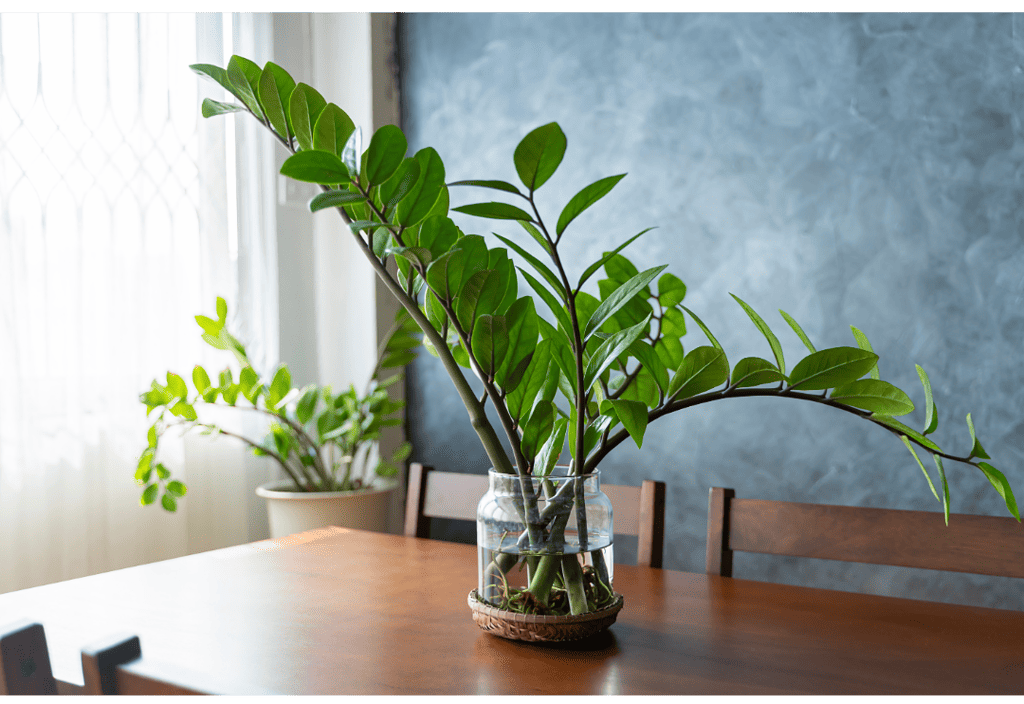
Peace Lily
The Peace Lily is another popular houseplant known for its air-purifying properties. It effectively removes formaldehyde, benzene, and trichloroethylene from the air. The Peace Lily is also easy to care for and thrive in low-light conditions.
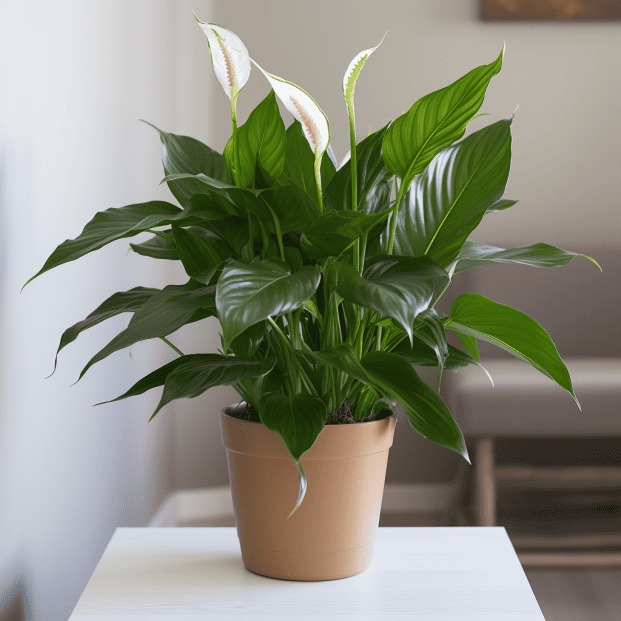
Corn Plant
The Corn Plant, also known as Dracaena Fragrans, is a popular houseplant known for its air-purifying properties. It effectively removes formaldehyde, benzene, and trichloroethylene from the air. The Corn Plant is also easy to care for and can thrive in low-light conditions.
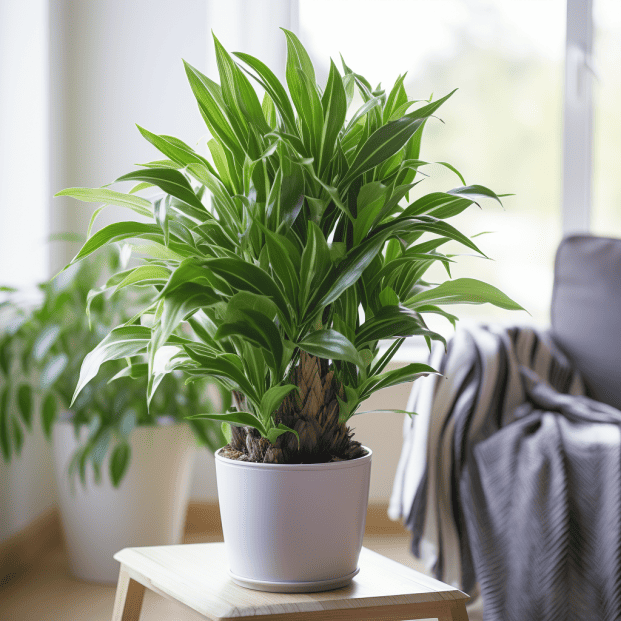
Boston Fern
The Boston Fern is a popular houseplant known for its air-purifying properties. It effectively removes formaldehyde, benzene, and xylene from the air. The Boston Fern is also easy to care for and can thrive in low-light conditions.

Spider Plant
The Spider Plant is a popular houseplant known for its air-purifying properties. It effectively removes formaldehyde, benzene, and carbon monoxide from the air. The Spider Plant is also easy to care for and can thrive in low light conditions.

English Ivy
English Ivy is a popular houseplant that is known for its air-purifying properties. It effectively removes formaldehyde, benzene, and xylene from the air. English Ivy is also easy to care for and can thrive in low light conditions.
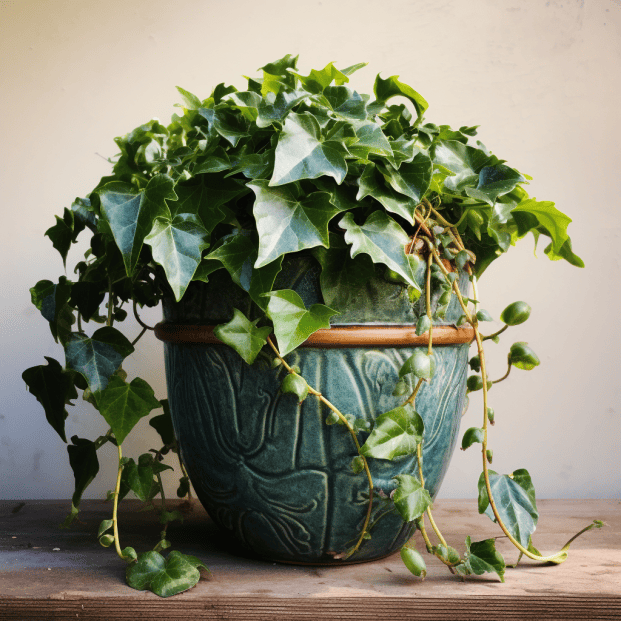
Philodendron
Philodendron is a popular houseplant that is known for its air-purifying properties. It effectively removes formaldehyde, benzene, and trichloroethylene from the air. Philodendron is also easy to care for and can thrive in low-light conditions.
Overall, houseplants can play an essential role in improving indoor air quality. By choosing the right houseplants, individuals can reduce the levels of pollutants in their homes and offices, leading to a healthier and more comfortable living environment.
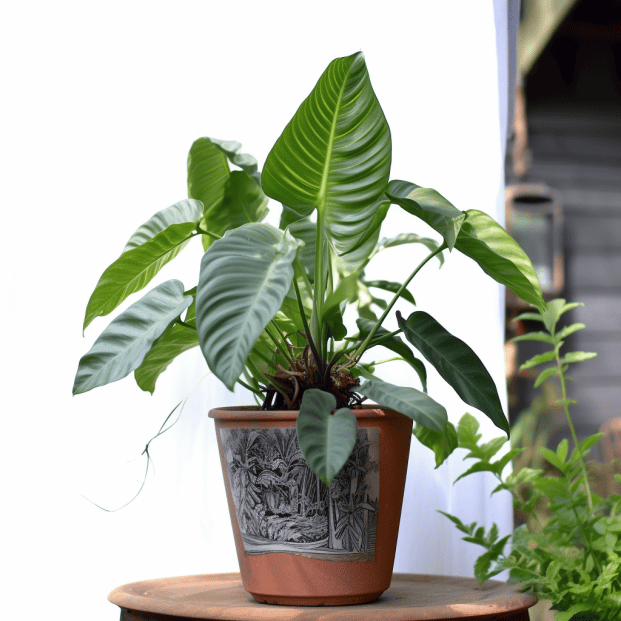
Scientific Studies on Houseplants and Air Quality
Over the years, numerous scientific studies have been conducted to evaluate the effectiveness of houseplants in purifying indoor air. One of the most widely cited studies is the NASA Clean Air Study, shown in the late 1980s. The study aimed to identify plants that could remove common indoor air pollutants such as benzene, formaldehyde, and trichloroethylene.
The NASA study found that certain houseplants, including the peace lily, spider plant, and snake plant, effectively removed these pollutants from the air. However, it is worth noting that the study was conducted in a test chamber and may not fully reflect real-world conditions.
Another Environmental Protection Agency (EPA) study found that indoor air can be up to five times more polluted than outdoor air. This is due to various factors, including poor ventilation, household chemicals use, and allergens and other pollutants.
In recent years, there has been renewed interest in the potential health benefits of houseplants. A study by the University of Birmingham found that ordinary potted houseplants can improve indoor air quality by removing volatile organic compounds (VOCs) from the air.
While there is still much to learn about the relationship between houseplants and indoor air quality, future research will likely continue to explore this topic. In the meantime, incorporating houseplants into your home or office can be a simple and effective way to improve air quality and promote a healthier indoor environment.
Health Implications of Indoor Air Quality
Indoor air quality is an essential aspect of human health, and poor air quality can lead to various health problems. Exposure to pollutants in indoor air has been linked to a range of health effects, including headaches, drowsiness, loss of appetite, and psychological disturbances.
Poor indoor air quality’s impact on mental health is one of the most significant health implications. Studies have shown that exposure to pollutants in indoor air can lead to psychological disturbances, including depression and anxiety. Poor indoor air quality has also been linked to headaches and eye irritation, which can significantly impact quality of life.
In addition to mental health, poor indoor air quality can negatively impact physical health. Exposure to pollutants in indoor air has been linked to liver damage and respiratory problems, including asthma. Poor indoor air quality can also lead to drowsiness and loss of appetite, which can significantly impact overall health and well-being.
To mitigate the negative health implications of poor indoor air quality, improving air quality in indoor environments is essential. One effective way to improve indoor air quality is introducing houseplants into the atmosphere. Research has shown that common houseplants can improve indoor air quality by removing pollutants, including nitrogen dioxide (NO2).
Overall, it is clear that indoor air quality has significant implications for human health. Improving indoor air quality, such as introducing houseplants into the environment, can mitigate the adverse health effects of poor air quality and improve overall health and well-being.
Houseplants and Office Spaces
Office spaces can be a source of indoor air pollution due to various chemicals such as formaldehyde, benzene, and trichloroethylene. These chemicals can be found in office furniture, carpets, and cleaning products. Indoor air pollution can lead to various health problems, such as headaches, dizziness, and respiratory issues.
Interior landscape plants for indoor air pollution reduction can be used to improve air quality in office spaces. According to a study led by the University of Birmingham and in partnership with the Royal Horticultural Society (RHS), ordinary potted house plants can significantly reduce air pollution in homes and offices. The study found that plants can absorb harmful chemicals such as formaldehyde, benzene, and trichloroethylene.
In addition to improving air quality, houseplants can positively impact the well-being of employees in office spaces. Research has shown that plants can reduce stress, increase productivity, and improve mood. Having plants in an office space can also enhance the aesthetic value of the room.
When selecting houseplants for an office space, it is important to consider factors such as lighting, temperature, and maintenance requirements. Some plants that are suitable for office spaces include:
- Spider Plant
- Peace Lily
- Boston Fern
- English Ivy
- Snake Plant
Overall, incorporating houseplants into office spaces can have numerous benefits for both air quality and employee well-being.

The Role of Soil and Photosynthesis
Houseplants have been known to improve indoor air quality by removing harmful pollutants such as nitrogen and carbon dioxide. However, the role of soil and photosynthesis in this process is often overlooked.
Soil plays a crucial role in the removal of pollutants from the air. It is a sink for many harmful gases and pollutants, such as volatile organic compounds (VOCs) and nitrogen dioxide. Soil microbes break down these pollutants and convert them into less toxic compounds. Additionally, soil provides nutrients for plants to grow and carry out photosynthesis.
Photosynthesis is the process by which plants convert carbon dioxide into oxygen. During this process, plants take in carbon dioxide through tiny pores called stomata and release oxygen into the air. This process improves air quality and helps regulate the amount of carbon dioxide in the atmosphere.
The amount of photosynthesis in a plant is directly related to the light it receives. Therefore, it is important to ensure that houseplants are placed in areas with adequate light to carry out this biological process. Studies have shown that indoor plants can contribute about 0.9-9% to indoor ozone removal through photosynthesis.
In summary, soil and photosynthesis play crucial roles in improving indoor air quality by removing harmful pollutants and regulating carbon dioxide levels. Providing houseplants with adequate light and nutrients is essential to carry out these processes effectively.

Air Quality and COVID-19
The COVID-19 pandemic has increased awareness of the importance of air quality. The virus is primarily spread through respiratory droplets, but there is also evidence that it can be transmitted through the air. Therefore, improving indoor air quality has become a critical component in preventing the spread of COVID-19.
One way to improve indoor air quality is by opening windows and doors to allow fresh air into the home. This can help to dilute any virus particles that may be present in the air. Another way to improve air quality is by regularly maintaining filtering, cooling, and heating systems. This can help to remove any contaminants that may be present in the air.
Houseplants have also been found to contribute to indoor air quality. A study published in Air Quality, Atmosphere & Health found that potted plants in indoor spaces can remove nitrogen dioxide (NO2), a chemical compound “representative of polluted outdoor air.” However, it is essential to note that while houseplants can contribute to air quality, they should not be relied upon as the sole method of improving indoor air quality.
It is important to note that while improving indoor air quality can help to prevent the spread of COVID-19, it is not a substitute for other preventative measures such as wearing masks, social distancing, and washing hands regularly. However, improving indoor air quality can be a helpful tool in preventing the spread of the virus in indoor spaces.
Other Methods of Air Purification
Houseplants are not the only way to purify indoor air. Other methods are also effective in removing pollutants and improving air quality. Here are some techniques that can be used in conjunction with houseplants:
Ventilation
Ventilation is an effective way to improve indoor air quality. It involves bringing in fresh outdoor air and removing stale indoor air. The ventilation rate is an essential factor in determining the effectiveness of ventilation. A higher ventilation rate means more outdoor air is being brought in, which can dilute indoor pollutants.
HEPA Filters
HEPA filters are high-efficiency air filters that can remove a wide range of airborne particles, including pollen, dust, and pet dander. They are especially effective in removing fine particles that can cause respiratory problems. HEPA filters are commonly used in air purifiers and vacuum cleaners.
Green Walls
Green walls, also known as living walls or vertical gardens, are covered with plants. They can improve indoor air quality by absorbing pollutants and releasing oxygen. Green walls can also help regulate humidity levels and reduce noise levels.
Overall, there are many ways to improve indoor air quality. Houseplants are just one of the many methods that can be used in conjunction with other methods to create a healthier indoor environment.

Myths and Truths About Houseplants and Air Quality
Houseplants have long been touted as a natural way to improve indoor air quality. However, many myths and misconceptions surround houseplants’ effectiveness in purifying the air. Here are some truths and myths about houseplants and their contributions to air quality.
Myth: Houseplants purify the air indoors
Many believe houseplants can purify the air indoors by removing toxins and pollutants. While it is true that plants can absorb some harmful compounds from the air, the amount they can remove is relatively tiny. According to a study by scientists, houseplants make “at best, modest contributions of about 0.9-9% to indoor ozone removal.”
Truth: Houseplants can improve air quality in many ways
While houseplants may not be able to purify the air completely, they can still enhance the quality of air in several ways. For example, plants can increase humidity levels, which can help reduce respiratory problems and dry skin. They can also absorb carbon dioxide and release oxygen, which can help improve air quality.
Myth: Houseplants can remove all indoor pollutants
Some people believe houseplants can remove all indoor pollutants, including those from cigarette smoke and volatile organic compounds (VOCs). While plants can absorb some of these pollutants, they cannot remove them completely. Some plants can even release VOCs, contributing to indoor air pollution.
Truth: Houseplants can provide many benefits beyond air quality
Houseplants can provide many benefits beyond improving air quality. They can help reduce stress, improve mood, and increase productivity. They can also add aesthetic value to a room and make it more inviting.
In conclusion, while houseplants may not be able to purify the air completely, they can still provide many benefits to indoor air quality. However, it is important to separate fact from fiction when it comes to the effectiveness of houseplants in purifying the air.
Potential Risks and Considerations
While houseplants can improve indoor air quality, there are some potential risks and considerations to consider.
One consideration is that some plants can be toxic to pets and children if ingested. For example, the popular plant species, philodendron, contains calcium oxalate crystals that can cause irritation and swelling of the mouth and throat if ingested. Therefore, it is important to research a plant’s toxicity before purchasing it, particularly if there are pets or young children in the household.


Another consideration is that some plants may release volatile organic compounds (VOCs) into the air. VOCs are chemicals that can have negative health effects, such as headaches, dizziness, and irritation of the eyes, nose, and throat. While the levels of VOCs released by plants are generally low, it is important to be aware of the potential for exposure.
Additionally, some plants may not effectively remove certain pollutants from the air. For example, while many plants are effective at removing formaldehyde, benzene, and trichloroethylene from the air, they may not be as effective at removing other pollutants, such as mutagenic particles.
Lastly, it is important to consider the materials used in constructing the plant container. For example, particleboard can release formaldehyde into the air, which can counteract the air-cleaning benefits of the plant. It is recommended to use plant containers made from materials that do not release harmful chemicals into the air.

Overall, while houseplants can significantly benefit indoor air quality, it is important to consider the potential risks and take necessary precautions to ensure a safe and healthy environment. The Environmental Protection Agency recommends using a combination of air-cleaning strategies, including ventilation and air purifiers and houseplants, to improve indoor air quality.
Conclusion
In conclusion, houseplants have been found to have a positive impact on indoor air quality. They can help remove harmful pollutants from the air, such as formaldehyde, benzene, and nitrogen dioxide. However, it is important to note that while houseplants can contribute to improving air quality, they are not a complete solution on their own.
Opening windows and ensuring proper ventilation is still crucial for maintaining good air quality indoors. Additionally, it is important to choose the right houseplants for the space and to care for them properly in order to maximize their air-purifying benefits.
When selecting houseplants for air purification, it is important to consider factors such as the plant’s ability to remove pollutants, its size and growth rate, and its overall suitability for the space. Some of the most effective air-purifying houseplants include spider plants, peace lilies, and snake plants.
Overall, incorporating houseplants into indoor spaces can have a positive impact on air quality and contribute to a healthier living environment. However, it is important to remember that they should be used in combination with other strategies for maintaining good indoor air quality.
Frequently Asked Questions
What are some of the best indoor plants for air purification that are safe for pets?
Some of the best indoor plants for air purification that are safe for pets include spider plants, Boston ferns, and African violets. These plants are not toxic to pets and can help remove harmful toxins from the air.
Which house plant is considered the most effective for air purification, according to NASA?
According to NASA, the most effective house plant for air purification is the peace lily. This plant can remove toxins such as benzene, formaldehyde, and carbon monoxide from the air.
Can houseplants actually improve the oxygen levels in a room?
Yes, houseplants can improve the oxygen levels in a room. During photosynthesis, plants absorb carbon dioxide and release oxygen, which can help improve the air quality in a room.
What are the benefits of having houseplants for air quality, according to NASA?
According to NASA, houseplants can help remove harmful toxins from the air, improve oxygen levels, and reduce stress levels. In addition, studies have shown that indoor plants can help increase productivity and creativity.
Do snake plants really clean the air, and how effective are they?
Yes, snake plants can help clean the air. They are effective at removing toxins such as formaldehyde, benzene, and trichloroethylene. However, it is important to note that snake plants are toxic to pets and should be kept out of reach.
What plant is known to remove 78% of airborne mold, and how does it work?
The plant known to remove 78% of airborne mold is the English ivy. This plant works by absorbing mold particles through its leaves and roots, which can help improve the air quality in a room.


